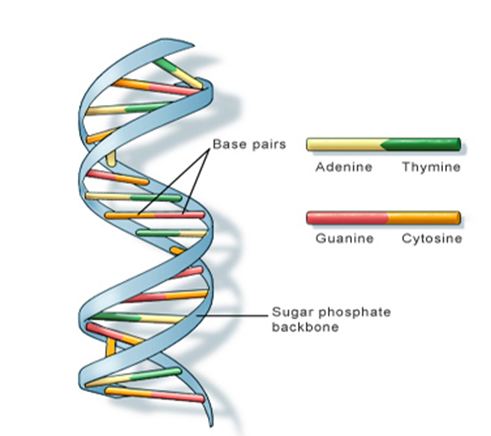MCQ ON genetic basis of inheritance class 12 for NEET |genetic basis of inheritance class 12 | MCQ genetic basis of inheritance with Answer | Check the below NCERT MCQ question for class 12 Biology based on the with Answers.
MCQ on genetic basis of inheritance class 12 Biology with answers were prepared based on the latest pattern.We have provided class 12 Biology MCQs question with Answers to help students understand the concept very well.
MCQ ON genetic basis of inheritance is useful for NEET / CSIR / UGC / CBSE / ICSE / AIIMS / EXAM / AFMC EXAM / STATE LEVEL MEDICAL EXAM/ KVS PGT BIOLOGY / NVS PGT BIOLOGY EXAM 2023-2024 ,2025

MCQ ON genetic basis of inheritance class 12 for NEET
INTRODUCTION:-
Gregor Johann Mendel is known as father of genetics. The term genetics was coined by Bateson.
Genetics is the study of principal and mechanism of heredity and variations.
Genetics has three branches :
-transmission genetics :-classical mandelian genetics studies transmission of genesfrom generation to generation.
Molecular genetics:-study genes and their working at the molecular level.
Population genetics:-studies distribution spread and changes in gene in population.
Variations:-variations are differences found in morphological physiological cytological and behaviour traits of individuals belonging to same species, race and family.
Variation occurs due to
Crossing over, chance combination of chromosomes during meiosis and fertilization.
MCQ GENETIC BASIS OF INHERITANCE class 12 for NEET/KVS PGT BIOLOGY / NVS PGT BIOLOGY EXAM 2023-2024,2025
1. The substance which cause a definite change in gene is called
(a) mutagen
(b) toxin
(c) cytotoxin
(d) alkaloid
Ans (a) mutagen
2. Exchange of segments between non homologous chromosome is
(a) translocation
(b) inversion
(c) crossing over
(d) Tetrasomy
Ans. (a) translocation
3. In a chromosome the protein content is
(a) nil
(b) trace
(c) half of DNA
(d) Same as DNA
Ans. (d) Same as DNA
4. Number of linkage in a polynucleotide would be
(a) same as number of nucleotides
(b) twice the number of nucleotides
(c) one less than the number of nucleotides
(d) one
Ans.(d) one
5. Number of chromosomes can increase or decrease due to
(a) mutation
(b) genetic repetition
(c) nondisjunction
(d) all the above
Ans.(c) nondisjunction
6. Gene is formed of
(a) poly nucleotide
(b) histone
(c) hydrocarbons
(d) lipoprotein
Ans.(a) polynucleotide
7. Which one is triploid ?
(a) mango
(b) wheat
(c) orange
(d) banana
Ans.(d) banana
8. Nobel prize for jumping gene / transposable DNA element was given to
(a) Muller
(b) Mc Clintock
(c) Morgan
(d) Kornberg
Ans.(b) Mc Clintock
9. Mutations are responsible for
(a) extinction of organisms
(b) variation in population
(c) increase in population
(d) maintaining genetic continuity
Ans. (b) variation in population
10. Hexaploid or modern wheat develop through
(a) hybridomas
(b) chromosome doubling
(c) hybridisation
(d) hybridisation and chromosome doubling
Ans. (d) hybridisation and chromosome doubling
11. Genetic identity of human male is known by
(a) nucleolus
(b) cell organelles
(c) autosomes
(d) sex chromosome
Ans.(d) sex chromosome
12. Triticum aestivum is
a) tetraploid
b) hexaploid
c) diploid
(d) haploid
Ans . (b) hexaploid
13. After crossing to plants the progeny was found to be male sterile due to maternal inheritance. The gene for male sterility resides in
(a) nucleus
(b) chloroplast
(c) cytoplasm
(d) mitochondria
Ans.(d) mitochondria
14. Change in chromosome number is called
(a) polyploidy
(b) aneuploidy
(c) chromosomal mutation
(d) somatic mutations
Ans. (c) chromosome mutation
15.In Down’s syndrome of a male child, the sex complement is
(a) XO
(b) XY
(c) XX
(d) XXY
Ans.(b) XY
ALSO READ:-
● YOU CAN WATCH BIOLOGY SIR Youtube channel
16. Where are barr bodies found ?
(a) ova
(b) sperms
(c) somatic cells of man
(d) somatic cells of woman
Ans.(d) somatic cells of woman







Leave a Comment